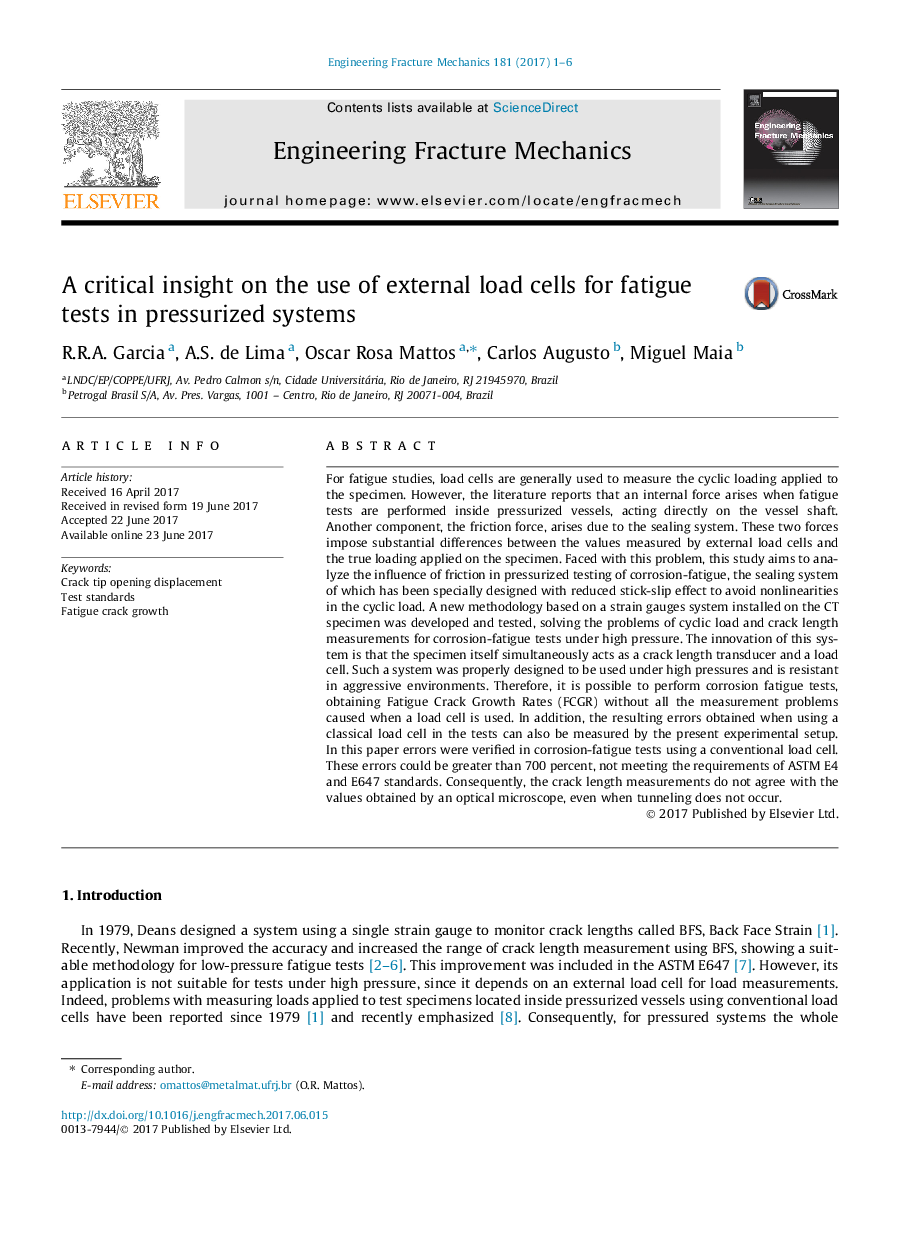| کد مقاله | کد نشریه | سال انتشار | مقاله انگلیسی | نسخه تمام متن |
|---|---|---|---|---|
| 5013882 | 1463048 | 2017 | 6 صفحه PDF | دانلود رایگان |
عنوان انگلیسی مقاله ISI
A critical insight on the use of external load cells for fatigue tests in pressurized systems
ترجمه فارسی عنوان
بینش انتقادی در مورد استفاده از سلول های باربری خارجی برای آزمایش خستگی در سیستم های تحت فشار
دانلود مقاله + سفارش ترجمه
دانلود مقاله ISI انگلیسی
رایگان برای ایرانیان
کلمات کلیدی
جابه جایی نوک کراک، استانداردهای تست، رشد ترک خستگی،
موضوعات مرتبط
مهندسی و علوم پایه
سایر رشته های مهندسی
مهندسی مکانیک
چکیده انگلیسی
For fatigue studies, load cells are generally used to measure the cyclic loading applied to the specimen. However, the literature reports that an internal force arises when fatigue tests are performed inside pressurized vessels, acting directly on the vessel shaft. Another component, the friction force, arises due to the sealing system. These two forces impose substantial differences between the values measured by external load cells and the true loading applied on the specimen. Faced with this problem, this study aims to analyze the influence of friction in pressurized testing of corrosion-fatigue, the sealing system of which has been specially designed with reduced stick-slip effect to avoid nonlinearities in the cyclic load. A new methodology based on a strain gauges system installed on the CT specimen was developed and tested, solving the problems of cyclic load and crack length measurements for corrosion-fatigue tests under high pressure. The innovation of this system is that the specimen itself simultaneously acts as a crack length transducer and a load cell. Such a system was properly designed to be used under high pressures and is resistant in aggressive environments. Therefore, it is possible to perform corrosion fatigue tests, obtaining Fatigue Crack Growth Rates (FCGR) without all the measurement problems caused when a load cell is used. In addition, the resulting errors obtained when using a classical load cell in the tests can also be measured by the present experimental setup. In this paper errors were verified in corrosion-fatigue tests using a conventional load cell. These errors could be greater than 700 percent, not meeting the requirements of ASTM E4 and E647 standards. Consequently, the crack length measurements do not agree with the values obtained by an optical microscope, even when tunneling does not occur.
ناشر
Database: Elsevier - ScienceDirect (ساینس دایرکت)
Journal: Engineering Fracture Mechanics - Volume 181, August 2017, Pages 1-6
Journal: Engineering Fracture Mechanics - Volume 181, August 2017, Pages 1-6
نویسندگان
R.R.A. Garcia, A.S. de Lima, Oscar Rosa Mattos, Carlos Augusto, Miguel Maia,
